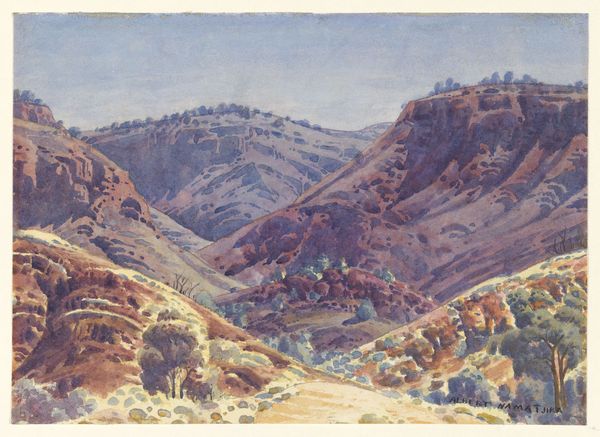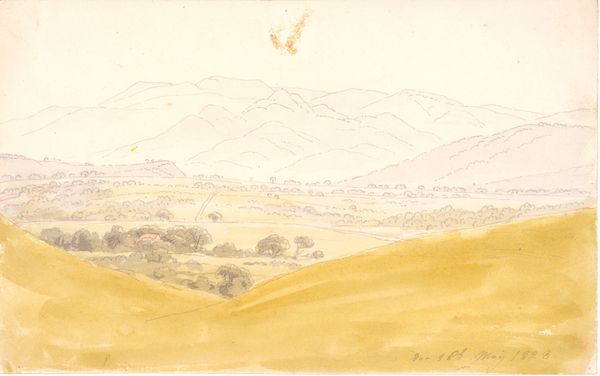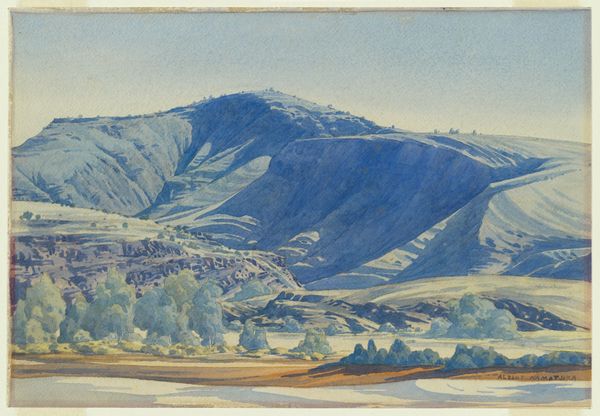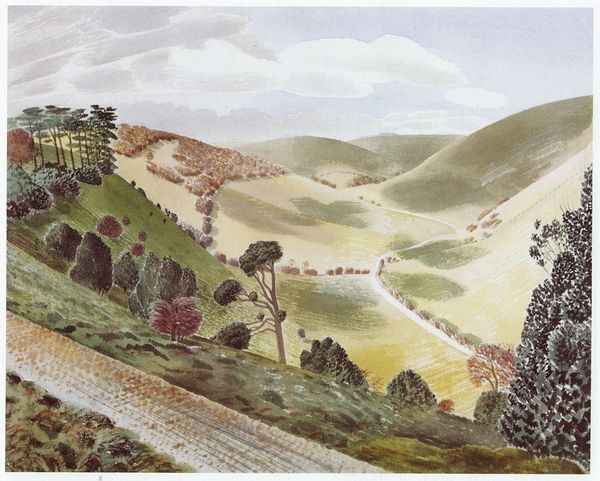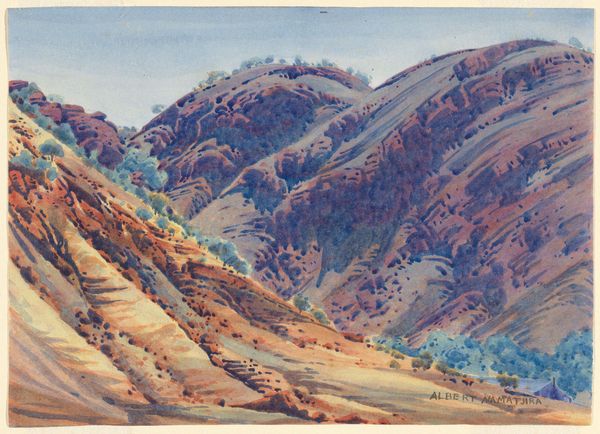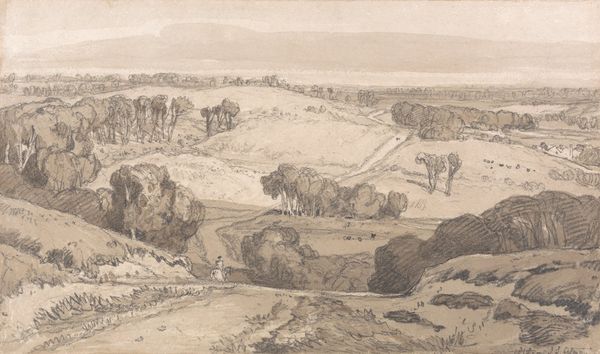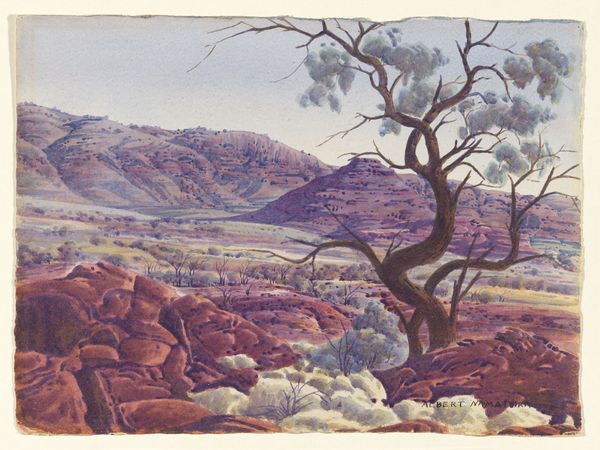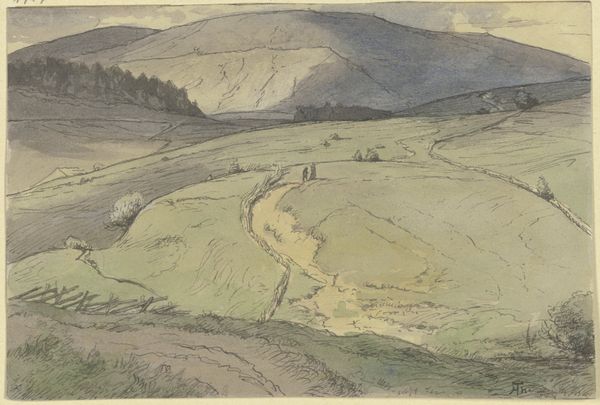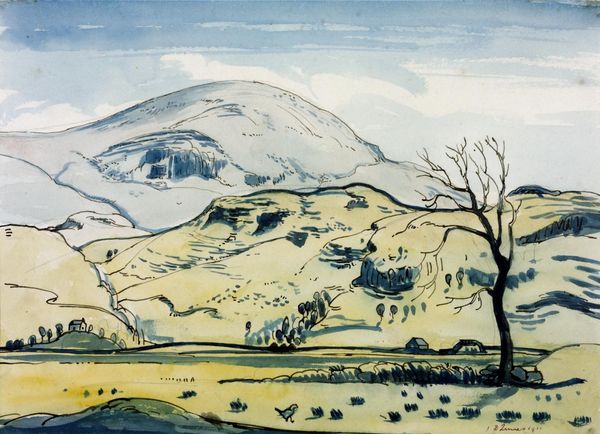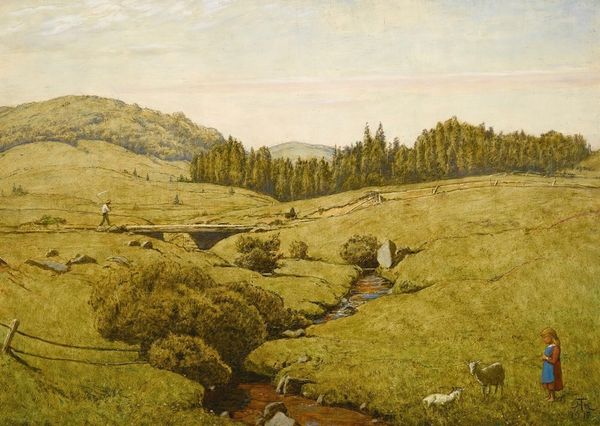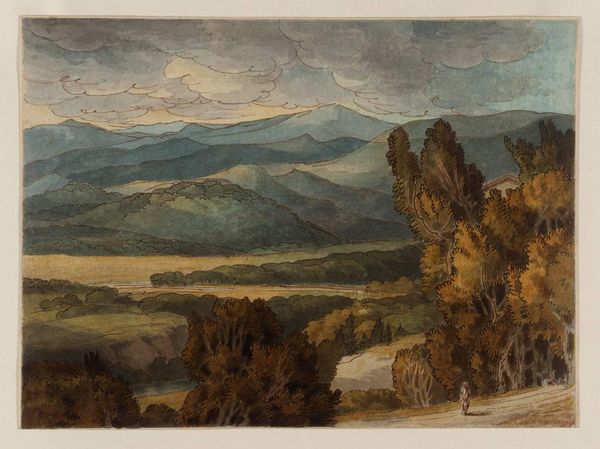
Akaroa Hills 1943
0:00
0:00
ritaangus
Christchurch Art Gallery Te Puna o Waiwhetū, Christchurch, New Zealand
plein-air, watercolor
#
plein-air
#
landscape
#
watercolor
#
watercolor
#
realism
Copyright: Rita Angus,Fair Use
Editor: We’re looking at Rita Angus’s “Akaroa Hills,” created in 1943. It's a watercolor painting, and there’s something almost topographical about the way the landscape is mapped out. What stands out to you in this piece? Curator: It’s interesting you mention the topographical aspect. For me, the painting speaks to a very specific moment in New Zealand's cultural history. Consider 1943: wartime, a burgeoning national identity…Angus’s choice to depict the land, not just as scenery but as a vital component of nationhood, feels deliberate. The lines almost carve the landscape and invite an assessment of use and occupation. Don't you think? Editor: Absolutely! It's not just pretty scenery, is it? You can almost feel the weight of history in those hills, especially knowing it was painted during wartime. Was landscape a popular theme for artists then? Curator: It was, but the *way* Angus portrays it sets her apart. Unlike romanticized, idealized landscapes, this feels grounded in reality. There’s an almost austere quality, don’t you think? Also, consider the context of land rights and indigenous representation, it certainly invites discussion around the social and political dimensions in art production. Editor: That makes me rethink the somewhat muted palette. I initially saw it as simply realistic, but now I see a political charge and identity. Thanks, I hadn’t really connected those elements before. Curator: Art and its interpretations are often interconnected with evolving socio-cultural conversations. Editor: I'll definitely remember that while thinking about art in context.
Comments
No comments
Be the first to comment and join the conversation on the ultimate creative platform.
